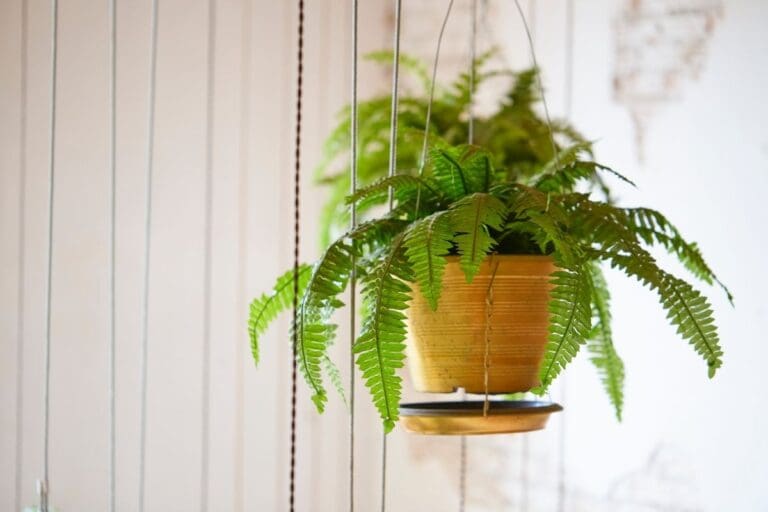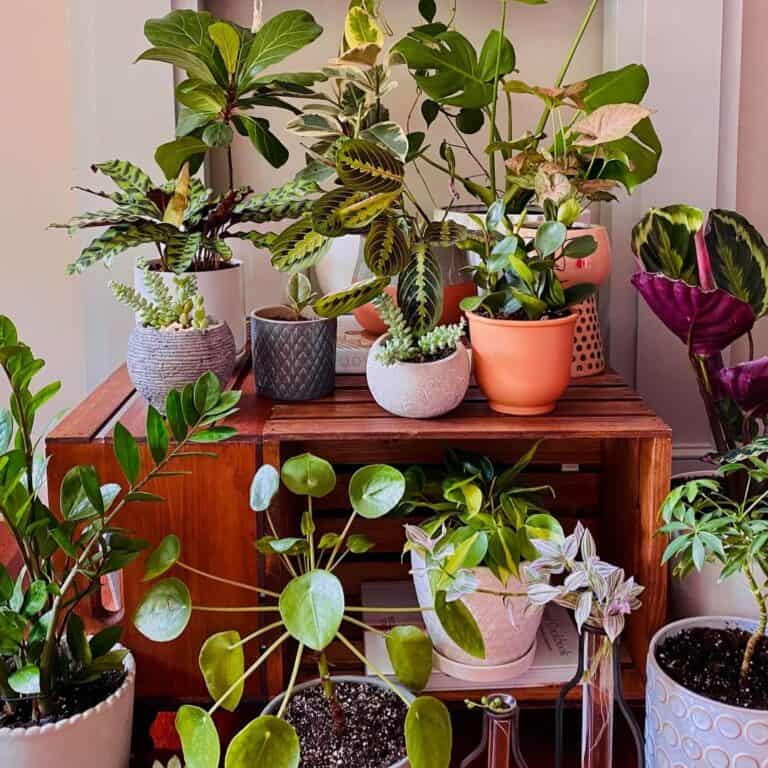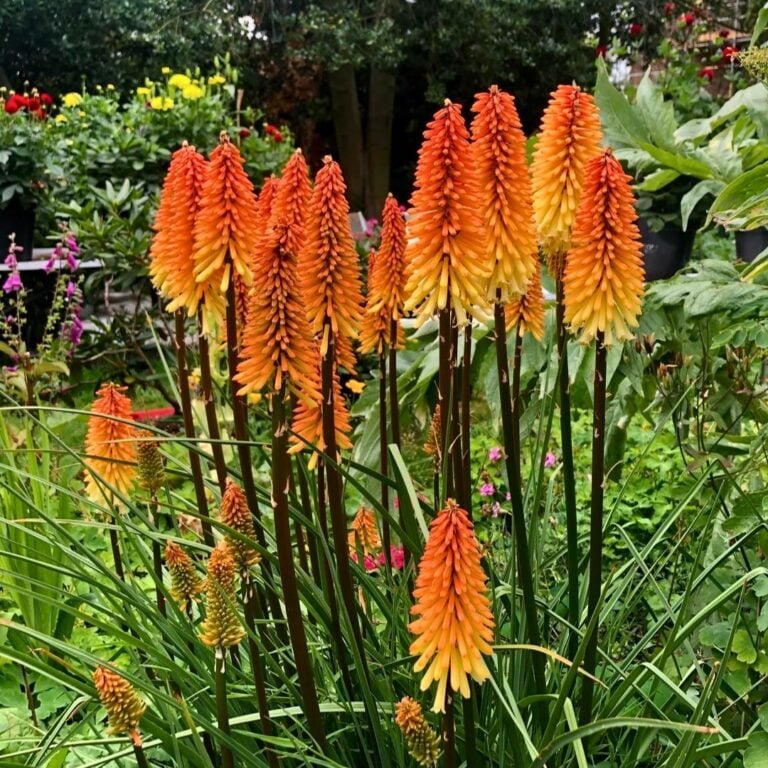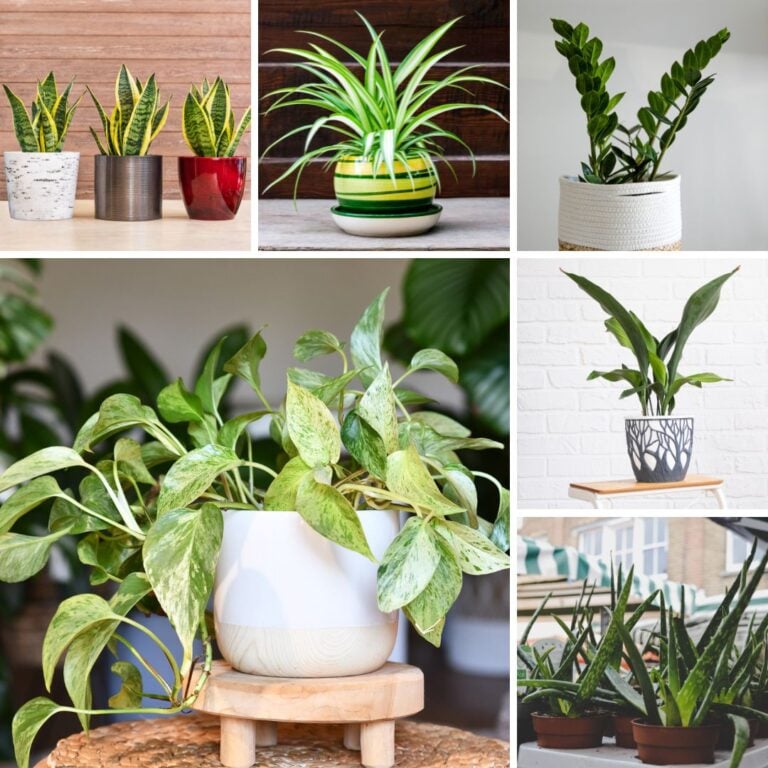10 Indoor Plants That Thrive on Indirect Winter Sun for a Cozy Home
Honestly, it can be a real challenge to keep plants healthy when the days get short and the sun just doesn’t show up like it used to.
Winter light totally changes how plants behave, and some types just seem to handle it better.
Picking plants that thrive on indirect winter sun is a game-changer. You get to enjoy greenery inside without stressing all the time.
I’m all about simple options that stay strong even when sunlight is in short supply. These plants liven up a room, give a pop of color, and don’t demand as much fuss as others.
With the right picks, your space can stay fresh and lively all season. It’s honestly not as hard as it sounds.
Please note: Simplify Plants is reader-supported. As an Amazon Associate, I earn from qualifying purchases made by our readers with no extra cost added to you all! Some links in the post are affiliate links and I get a commission from purchases made through links in the post.
1) Snake Plant (Sansevieria)

I have to say, the Snake Plant is a favorite of mine because it’s just so easy to care for. It doesn’t care much about low winter sun, which is a relief.
You can put it near a window with filtered light, and it’ll still do its thing. The tall, upright leaves with that cool green pattern look pretty sharp.
It gives off a modern, clean vibe, and honestly, I like how it stands out even though I barely have to do anything. It’s not needy at all.
One of the best things? It barely needs water. I only water mine when the soil’s bone dry—overwatering is a big no-no.
I also like that it doesn’t mind cooler indoor temps. I don’t stress about drafts or gloomy days; it just stays solid.
For me, Snake Plant fits right into my routine. It thrives even if I’m busy or forgetful, and it keeps my space looking fresh. What more could you want?
2) ZZ Plant (Zamioculcas zamiifolia)
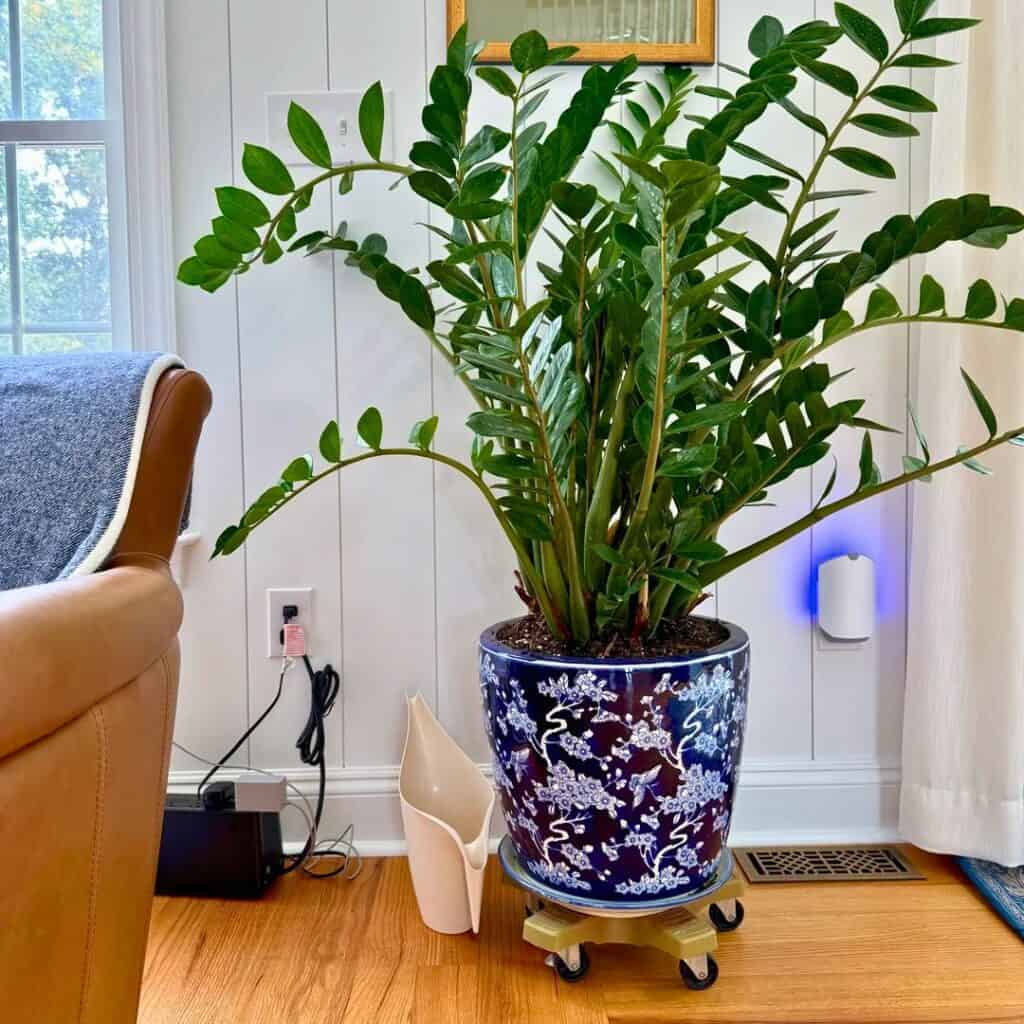
The ZZ Plant is honestly a lifesaver in winter. It doesn’t care about direct sunlight and does just fine with low to moderate light.
Those thick, waxy leaves? They store water, so you don’t have to water it all the time. I usually just wait until the soil feels dry.
I’ve noticed it stays green and healthy, even when the days are short and gray. It’s not the fastest grower, but it keeps looking good through winter.
I keep mine a few feet from the window, and it’s still happy. It’s one of those plants you really don’t have to worry about when the light is weak.
If you want something that’s reliable and won’t make you work too hard, the ZZ Plant’s a solid bet. It just gets on with it.
3) Pothos (Epipremnum aureum)
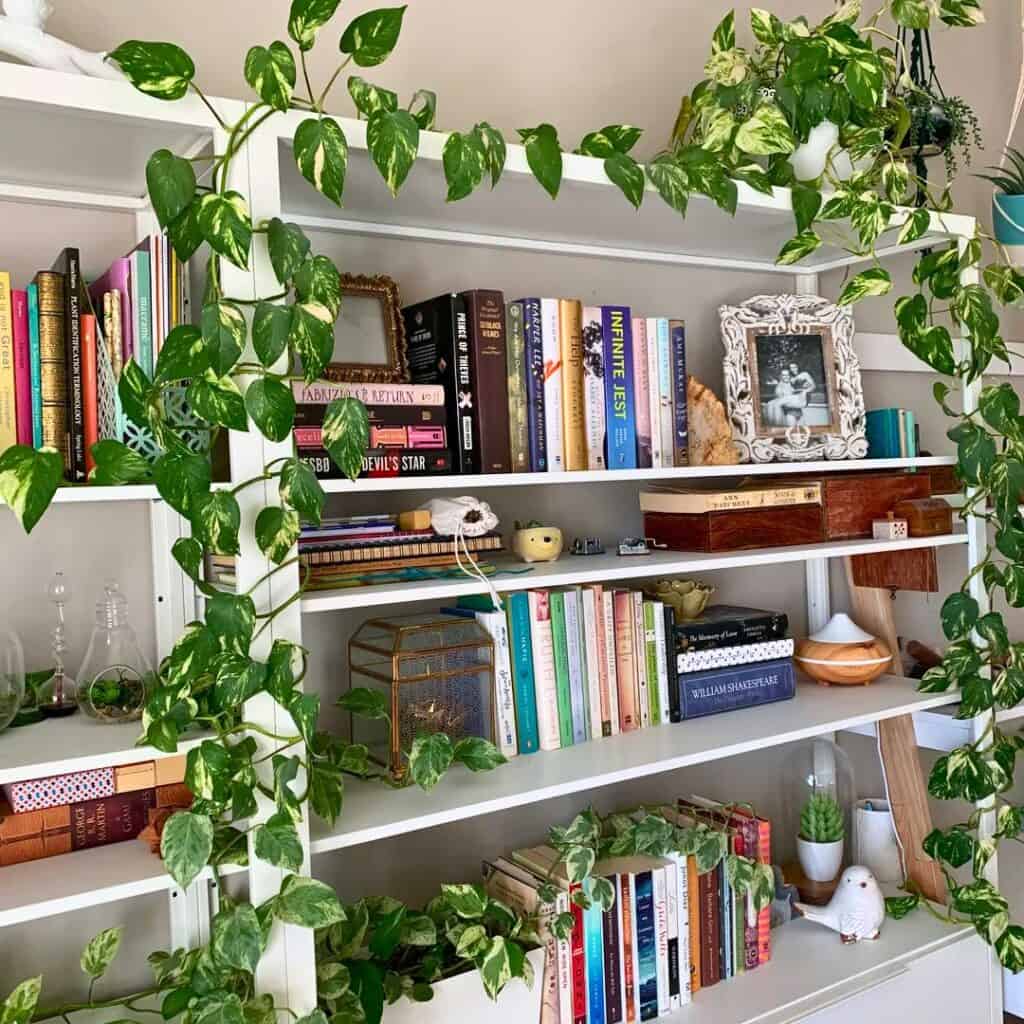
I’ll admit, Pothos is one of the easiest plants around. It’s totally fine with indirect winter sun, so you don’t have to hunt for the brightest spot.
The trailing vines and heart-shaped leaves look great in a hanging pot or up on a shelf. It adds a splash of green without hogging space.
I water mine only when the top soil feels dry. If I forget for a few days, it’s not the end of the world.
The leaves stay pretty healthy in low light, but if you want faster growth, put it near a bright window with filtered sun.
I trim the vines when they get unruly. That keeps it looking full and bushy.
For winter, Pothos is a low-maintenance plant that just keeps the place feeling alive.
4) Spider Plant (Chlorophytum comosum)

I’m a big fan of the Spider Plant because it’s so easy to care for, even when it’s cold out. It loves bright, indirect sunlight, which is perfect for those not-so-sunny windowsills.
The long, arching green and white striped leaves always look fresh. Plus, those little “spiderettes” hanging down are pretty cute.
I just use well-draining soil, and in winter, I let the top soil dry out before watering again.
Spider Plants are surprisingly tough. They handle dry indoor air from heaters, though I sometimes give the leaves a mist just to keep them perky.
If I forget to water now and then, it’s not a disaster. This plant is forgiving, which is honestly a relief.
5) Peace Lily (Spathiphyllum)
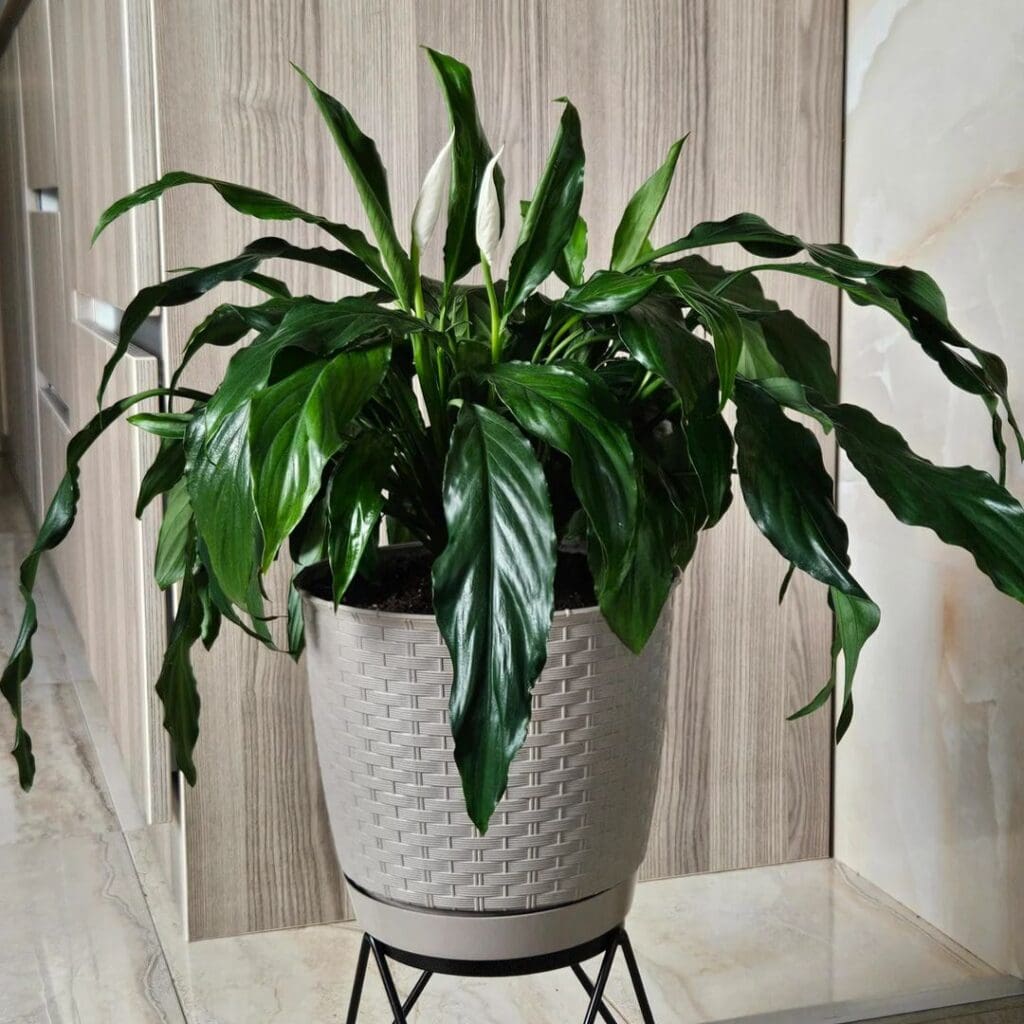
Peace Lily is a staple in my place because it does so well with indirect light, even when winter makes things gloomy.
What’s cool is it actually tells you when it’s thirsty—the leaves droop, and after a drink, they perk right up. Makes caring for it pretty straightforward.
The dark green leaves always look good, and if I remember to wipe them down, they stay shiny and healthy.
Sometimes it’ll even bloom with little white flowers if it’s happy, but even the leaves alone brighten things up.
I keep mine near a window with filtered light—not too close, not too far—and it seems to like that balance.
6) Chinese Evergreen (Aglaonema)

I’m a big fan of Chinese Evergreen because it’s not fussy about light. It loves indirect winter sun, so you can put it pretty much anywhere.
The leaves are a mix of green, silver, and sometimes red, which adds a bit of color when everything else feels drab.
I water it only when the topsoil feels dry. Good drainage is key—this plant does not like wet feet.
It handles average indoor temps just fine. I just keep it away from cold drafts and heating vents.
Since it grows slowly, I don’t have to mess with repotting much. That’s a win for me.
I’ve noticed it helps the air feel a bit fresher, too. Not a huge difference, but I’ll take it.
Chinese Evergreen is definitely one of my go-tos for winter. It’s attractive and barely needs anything from me.
7) Philodendron Brasil

My Philodendron Brasil is honestly one of the easiest plants I own, especially in winter. Those heart-shaped leaves with green and yellow streaks really pop.
It does best in bright, indirect light—a windowsill that doesn’t get blasted by sun is just right. The colors seem more vibrant with steady light.
I water when the top inch of soil feels dry and always make sure the pot has good drainage.
It keeps growing even in the cooler months, which is always a nice surprise. I trim the long vines to keep it bushy.
Average room temps are fine, just don’t let it get too cold or drafty.
If you want it looking fuller, just pinch back the stems. It’s easy and makes a big difference.
Honestly, with a little care, Philodendron Brasil stays bright and lively all winter.
8) Cast Iron Plant (Aspidistra elatior)
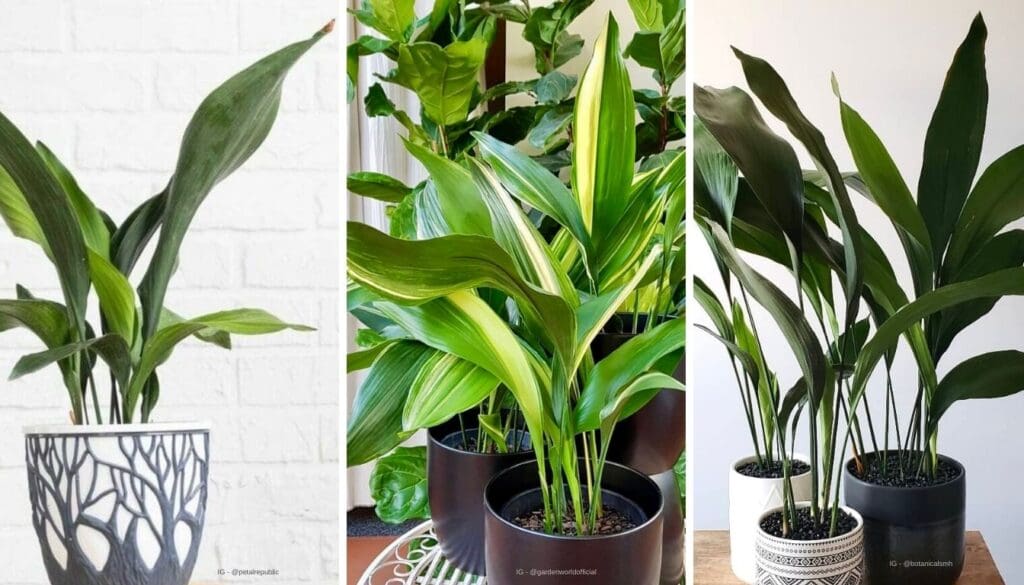
The Cast Iron Plant is a real workhorse. It handles low light like a champ and still looks good.
Its long, dark green leaves give off a calm, natural vibe. I barely have to do anything, which is perfect.
I water when the top inch of soil dries out. Too much water is the only real issue—so I stay on the dry side.
It tolerates cooler indoor temps, so if my place is a little chilly, I don’t worry.
It grows slowly, but honestly, that’s a plus. I don’t have to repot it often, and it fills a corner nicely.
The Cast Iron Plant is great for spots with barely any sunlight. Even a hallway or dim corner works.
It’s steady, green, and doesn’t ask for much—just how I like it.
9) Dracaena Marginata

I like having a Dracaena Marginata around because it’s so easy to live with. The thin, spiky leaves give a nice touch of green without taking over the space.
It prefers bright, indirect light, which is perfect in winter. I keep mine near a window with filtered sun and it’s happy.
Watering is simple—I let the top inch of soil dry out before I water again. Overwatering is the only thing that really messes it up.
The slender trunk and tall shape look stylish and don’t crowd the room. Plus, it grows slowly, so I’m not constantly repotting.
It handles different indoor conditions, even when the air’s a bit dry from heating.
Wiping the leaves with a damp cloth keeps them looking fresh and helps them soak up more light.
For me, Dracaena Marginata is just an easy way to keep things green in winter without much hassle. It’s upright, stays healthy, and doesn’t ask for much.
10) Parlor Palm (Chamaedorea elegans)

I’ve always liked the Parlor Palm because it’s honestly one of the easiest houseplants out there. It does just fine in low to medium light, which is a lifesaver during those gloomy winter months.
I don’t have to stick it right up against a window since it prefers indirect sunlight anyway. That makes it so much more flexible for small spaces.
This palm has these slender green fronds that instantly make a room feel a little more tropical. It stays compact, so I can pop it on a table, a shelf, or tuck it in a corner without worrying it’ll take over the place.
It’s worked well for me in both tiny apartments and bigger living rooms. I only water it when the top inch of soil feels dry—too much water is a no-go, so drainage is key.
In winter, I’ve noticed it barely needs any water at all. The Parlor Palm grows slowly, so I don’t find myself repotting it every year.
I appreciate that it stays manageable and doesn’t need constant fussing. Plus, it’s safe for pets, which is a relief since my cat is a little too curious sometimes.
If you want a simple way to bring in some greenery during the colder months, this plant is a winner. It doesn’t ask for much and keeps things feeling fresh indoors.
Understanding Indirect Winter Sunlight
I’ve noticed my plants act differently in winter, probably because the sun shifts and gets weaker. Light still matters, but it sneaks into my rooms in a softer, more diffused way.
What Is Indirect Sunlight?
To me, indirect sunlight just means the room is bright, but the sun’s rays aren’t hitting the leaves directly. If sunlight is coming through a curtain, bouncing off a wall, or filtering through a sheer blind, that’s indirect light.
Direct sunlight can really burn sensitive leaves, but indirect light is much gentler. Even if you put a plant near a bright window, the light is often indirect once it passes through glass or bounces around.
I like to check by putting my hand in the light. If the shadow is soft and blurry, that’s indirect. If it’s sharp and dark, it’s direct sunlight.
This kind of light is perfect for plants like ferns, pothos, and snake plants that don’t want harsh rays. They still get what they need to grow, just without the stress.
How Winter Light Affects Indoor Plants
In winter, the sun sits lower in the sky, so the light comes in at a different angle. I’ll notice sunlight reaches farther into my rooms, but it’s weaker and doesn’t last as long.
Days are shorter, so my plants get fewer hours of light. Even a south-facing window isn’t as strong as it is in summer.
Sometimes I move my plants closer to windows or rotate them so they get light on all sides. Mirrors or white walls can help bounce a little extra brightness their way.
Some plants slow down in winter, and that’s totally normal. The main thing is to make sure they still get steady indirect light to keep them ticking along until spring.
Tips for Helping Indoor Plants Thrive in Winter
When winter rolls around, I mostly pay attention to how much water my plants get and the humidity in the air. Both can make a big difference for happy leaves and healthy roots.
Adjusting Watering Routines
I always water less often in winter because plants just aren’t as thirsty. Too much water leads to soggy soil and root rot, which is a pain.
I stick my finger in the top inch of soil—if it’s dry, I water. If not, I wait.
I use room-temperature water since cold tap water can shock the roots, especially for tropical plants. If a pot doesn’t have drainage holes, I’m extra careful to avoid overwatering—that water has nowhere to go.
Here’s what works for me:
- Small pots dry out faster, so I check them more.
- Large pots hold moisture, so I water less.
- Succulents and cacti barely need water at all in winter.
By feeling the soil instead of sticking to a strict schedule, I’ve dodged a lot of winter plant problems.
Using Humidity to Your Advantage
Indoor heating dries out the air, and I notice crispy leaves when humidity drops. I raise humidity by grouping plants together so they make a little humid microclimate.
I’ll sometimes put a tray of water and pebbles under the pots. As the water evaporates, it adds some gentle moisture to the air.
A small humidifier near my plants is even better, especially for ferns and calatheas. I don’t mist leaves much since water can sit on them and cause spots or mold.
I try to keep humidity around 40–50%—it really does help my plants look better during the winter.
Frequently Asked Questions
I focus on keeping my plants healthy in winter by picking the right types, adjusting water routines, and making sure they get enough light. Watching for signs of stress helps me catch problems before they get out of hand.
What are some low-maintenance indoor plants that do well with little sunlight?
I’ve had great luck with Snake Plant, ZZ Plant, and Pothos. They’re super easy and honestly don’t mind low light at all.
How often should I water indoor plants during the winter months?
I water less in winter since plants slow down. Usually, I let the top inch of soil dry out before watering again.
Can you recommend any pet-friendly plants that thrive in indirect sunlight?
Spider Plant and Areca Palm are my go-tos—they’re pet-safe and handle indirect light just fine. If you’ve got pets, they’re a safe bet for some greenery.
What are the best ways to provide adequate light to indoor plants in winter?
I move my plants near south- or east-facing windows for softer light. If there’s not enough sun, I’ll use LED grow lights to give them a boost.
How can I tell if my indoor plants are getting too much or too little light?
I look for yellowing leaves or slow growth—that usually means not enough light. If the leaves look scorched or faded, they’re probably getting too much.
What should I do to keep my indoor plants healthy when there’s less natural light available?
I like to rotate my plants every couple of weeks, just to make sure each side gets its fair share of light. It’s a small thing, but it really helps keep them growing evenly.
Dusting the leaves makes a difference too—sometimes I forget, but you’d be surprised how much better they soak up light when they’re clean. In winter, I’m careful not to water too much since the soil takes forever to dry out.
Recommended Garden Supplies
| Product Image | Our Recommended Gardening Supplies | Check Offers! |
|---|---|---|
Top Top
Top
Top
Top
Top
Top
Top
Top | rePotme Houseplant and Tropical Classic Potting Soil Mix | Check Offer On Amazon |
 Top
Top
Top
Top
Top
Top
Top
Top | Espoma Organic Indoor Plant Food | Check Offer On Amazon |
 Top
Top
Top
Top
Top
Top
Top
Top | GooingTop LED Grow Light 6000K Full Spectrum Clip Plant Growing Lamp | Check Offer On Amazon |
 Top
Top
Top
Top
Top
Top
Top
Top | Soil Moisture Meter | Check Offer On Amazon |
 Top
Top
Top
Top
Top
Top
Top
Top | Govee Hygrometer Thermometer, Bluetooth Enabled! | Check Offer On Amazon |
 Top
Top | LEVOIT Humidifiers for Large Room(Best For Plants) | Check Offer On Amazon |
 Top
Top
Top
Top
Top
Top
Top
Top | Upgraded DIY Automatic Drip Irrigation Kit, 15 Potted Houseplants Support | Check Offer On Amazon |
 Top
Top
Top
Top
Top
Top
Top
Top | Stainless Steel Heavy Duty Gardening Tool Set | Check Offer On Amazon |
 Top
Top
Top
Top
Top
Top
Top
Top | Bonide Insecticidal Soap | Check Offer On Amazon |
 Top
Top
Top
Top
Top
Top
Top
Top | Bonide 32 oz Spray Neem Oil for Organic Gardening | Check Offer On Amazon |
 Top
Top
Top
Top
Top
Top
Top
Top | Garden Safe Fungicide | Check Offer On Amazon |



